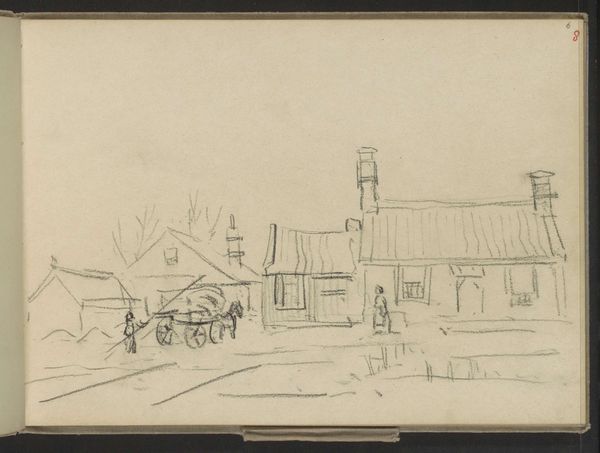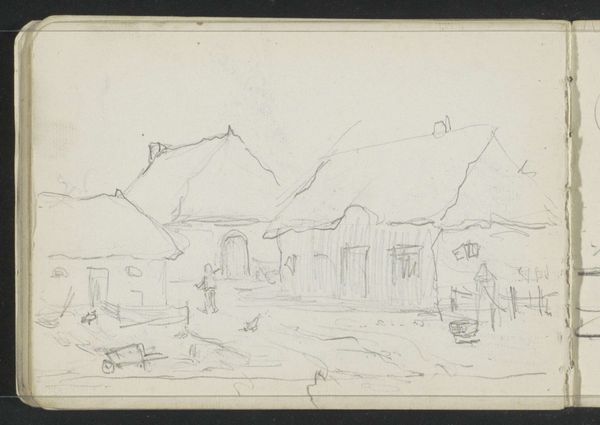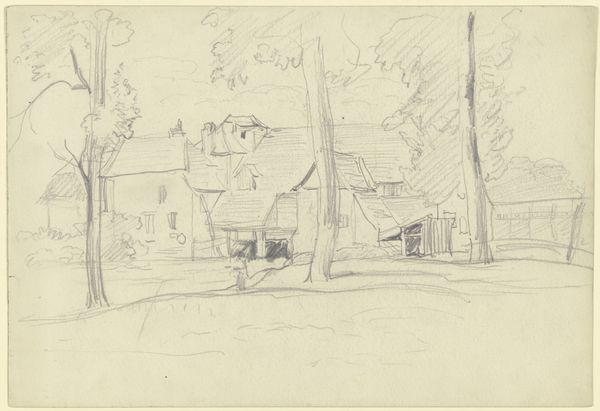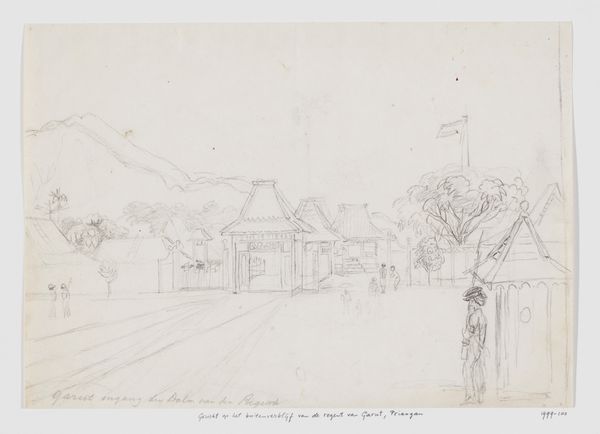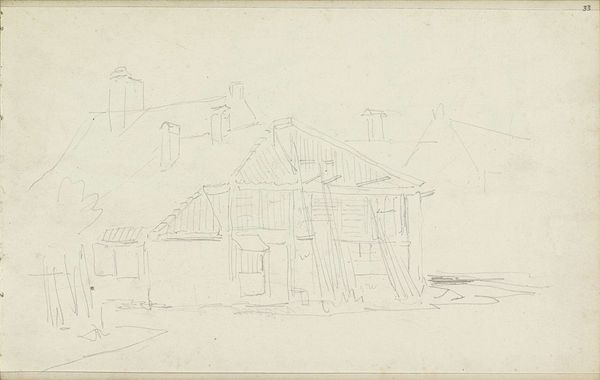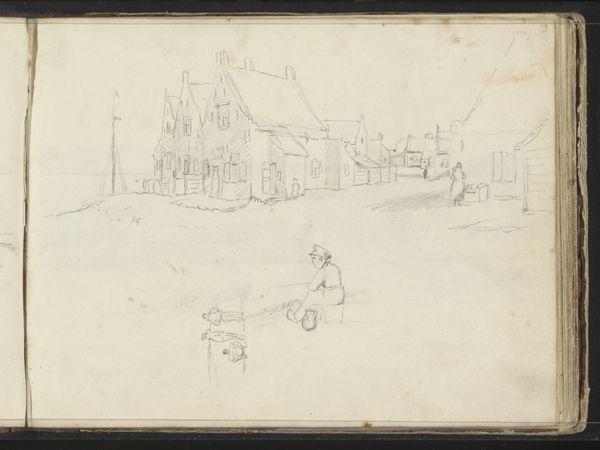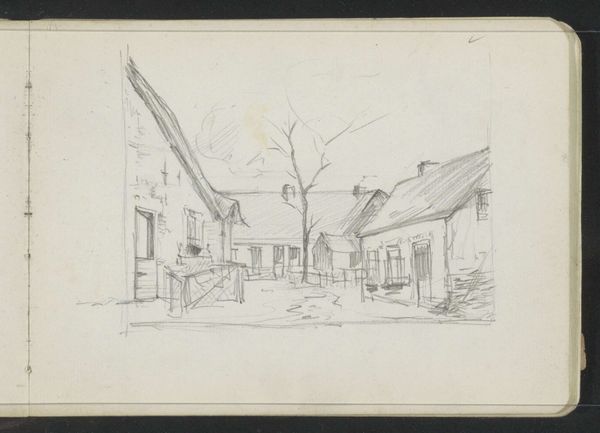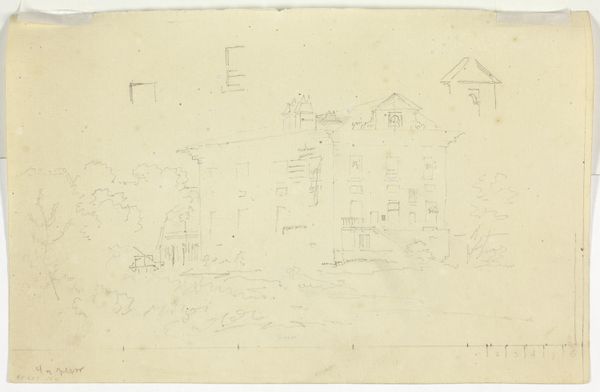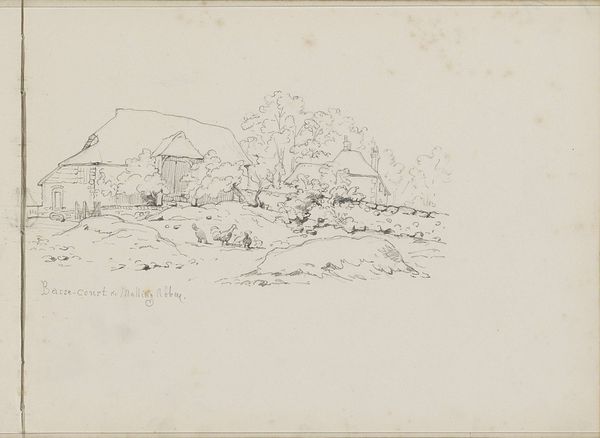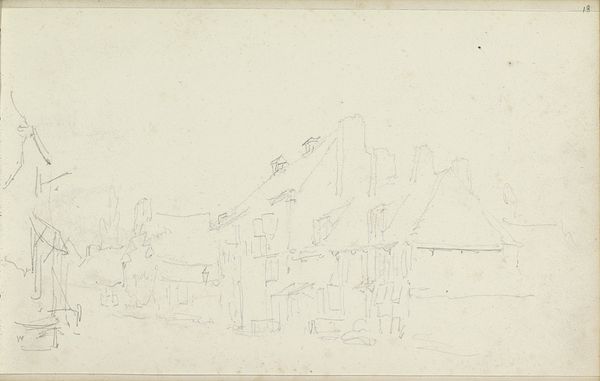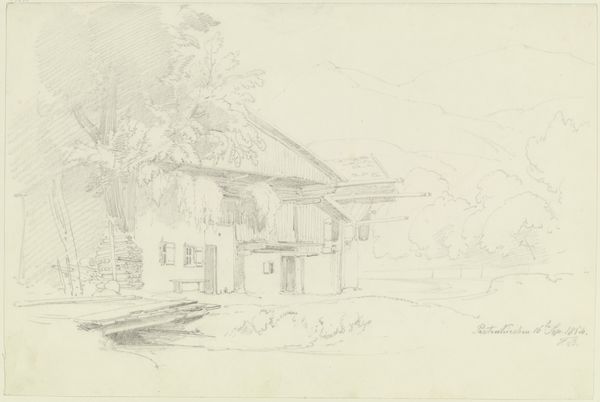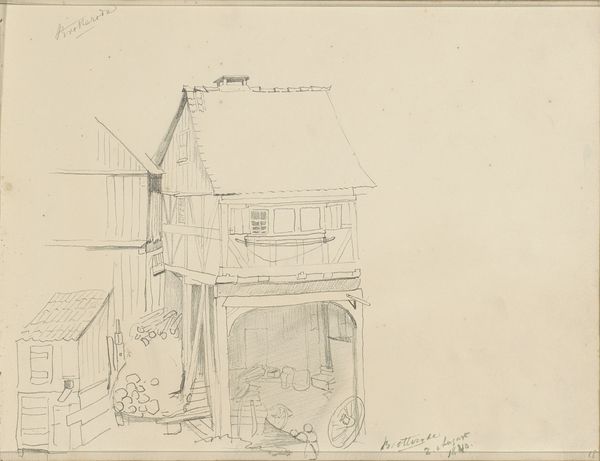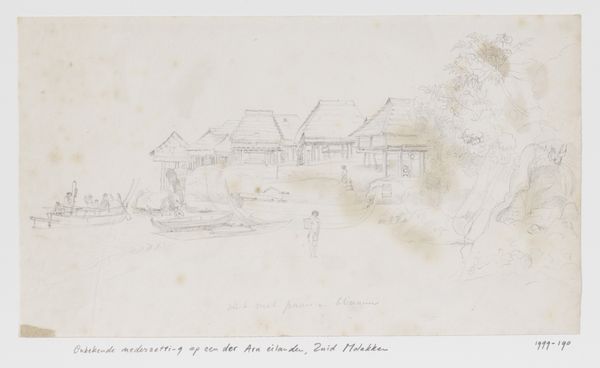
drawing, paper, pencil
#
drawing
#
landscape
#
etching
#
paper
#
pencil
#
cityscape
#
realism
Dimensions: height 227 mm, width 292 mm
Copyright: Rijks Museum: Open Domain
Editor: This is "Boerenerf in Hongarije en een staande man," a pencil drawing on paper by Albert van Giffen from 1928. It shows what seems to be a Hungarian farmstead. I'm immediately struck by the open composition, and this somewhat sparse yet intimate mood of rural life. How do you interpret this work? Curator: It's evocative, isn’t it? The light pencil strokes give it an ethereal quality, as if capturing a fading memory. Look at the positioning of the man. He's present, yet almost ghost-like, nearly the same visual weight as the outbuildings and tools, making one wonder if he represents humanity's place in nature’s rhythms. Do you think he belongs to the scenery or he just happens to pass by? Editor: He blends in, becoming a part of the environment. The tools, architecture, and man... all part of the cycle. Is there any sense of the psychological state within these signs? Curator: Precisely. Consider the cultural context. This was a period of significant change. The romanticised view of rural life contrasted with rapid urbanization. A piece like this taps into that tension, using symbolic imagery—the simple dwellings, the working animals, the lone figure—to speak to a longing for simpler times, an Eden perhaps lost. What does that 'Eden lost' symbol evoke in you? Editor: Melancholy, maybe? A feeling that such places will change drastically or disappear altogether, losing all memory of rural culture and customs. Curator: I agree. And the sparseness aids in that feeling. The absence of strong color pushes the emphasis onto form and composition, urging us to remember a time that perhaps never truly existed. The beauty lies in that yearning, I think. Editor: It’s as if he's created a visual poem on nostalgia and cultural memory. This close attention to lines offers more layers that I initially understood. Thank you for this interpretation!
Comments
No comments
Be the first to comment and join the conversation on the ultimate creative platform.
